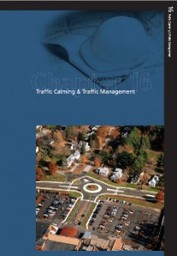 Read the full story by Steven Higashide at Tri-State's Blog Connecticut’s 2009 complete streets law requires that transportation projects receiving state funds consider all users of the road, and is considered one of the strongest laws of its type in the country. But when engineers and designers in the state sit down to begin designing a road project, they’re guided by the Connecticut Highway Design Manual (HDM), which contains outdated and ill-advised guidance that is incongruent with the state’s Complete Streets efforts. The HDM is the standard road design reference book the state makes available to planners and engineers. It was written in 2003, and although revisions to the manual have been made as recently as last year, it does not reflect the complete streets law (in fact, it does not even include the term “complete street”). In its most recent annual report, the Connecticut’s Bicycle and Pedestrian Advisory Board (CBPAB) writes that “a comprehensive rewrite of the Connecticut Highway Design Manual is the single most significant improvement that can be made that would result in real and permanent changes to the mobility of the people of the State.” Indeed, in many ways HDM remains rooted in car-oriented traffic engineering practices that fail to acknowledge the role of transportation in building safe, vibrant communities. In a telling passage, it describes traffic calming techniques as “typically limited to municipal streets”, though the state’s Complete Streets legislation includes state roads, and suggests that local governments that have developed their own traffic calming standards can use them “on a project-by-project basis.” The HDM does not even include designs for bike lanes. Instead, it directs readers to use a separate guide published by the American Association of State Highway and Transportation Officials (AASHTO) or reference an appendix to the state’s Bicycle and Pedestrian Transportation Plan. The only part of the HDM that references bike lane design is a series of quick-reference tables that describe five feet wide bike lanes as sufficient on multi-lane streets designed for cars going as fast as 45 mph (in a town center) or 50 mph (in suburban areas). Without a more robust bike lane section, Connecticut will be left behind as other parts of the country are increasingly using buffered or protected bike lanes that have more separation between cars and bikes. ..... >>> Read the full story by Steven Higashide at Tri-State's Blog Comments are closed.
|
Bike Walk Connecticut
NEWS Send us your bike walk related news and time permitting, we'll do our best to post it.
Topics
All
|
Photo from Roebot
